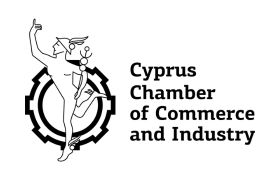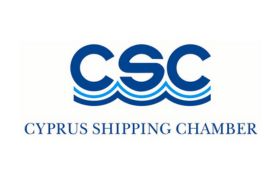- New EY survey reveals 89% of global executives see growth opportunities from today’s uncertainty
- Technology disruption and lack of skilled talent outweigh uncertainty as greatest concerns for global executives
- Nearly one in four (22%) “high-growth entrepreneurs” plan revenue growth of more than 26%
Global middle market organizations (companies with annual revenues of US$1m-US$3b) are showing no signs of slowing down in the face of geopolitical uncertainty. Over one-third (34%) of middle market companies plan to grow 6%-10% this year, far outpacing the latest World Bank global GDP growth forecasts of 2.7%, by more than 3%-7%.
The findings in the EY Growth Barometer, a first-of-its-kind survey of 2,340 middle market executives across 30 countries, reveal that in spite of geopolitical tensions, including Brexit, increasing populism, the rise of automation and artificial intelligence (AI) and skilled talent shortages, 89% of executives see today’s uncertainty as grounds for growth opportunities. What’s more, 14% of all companies surveyed have current year growth ambitions of more than 16%.
Charalambos Constantinou, Head of Advisory Services at EY Cyprus, says:
“Middle market companies represent nearly 99% of all enterprises and contribute nearly 45% to Global GDP. As globalization, demographic shifts and new technologies create seismic shifts in global markets and customer behaviors, the dynamic middle market is forging a range of capabilities to accelerate growth. Middle market leaders are not only attuned to uncertainty, but are seizing it to grow, disrupt other markets and drive their growth agendas.”
Growth ambitions vary across geographies
Despite facing two years of Brexit negotiations, start-ups (companies under five years old) headquartered in the UK are displaying the highest levels of confidence of the countries surveyed. UK start-ups are the most positive on current year growth ambitions with 26% seeking to grow by 11-25% and a further 23% looking at year-on-year growth of more than 26%.
But when looking at the largest markets, there are significant differences between the world’s largest economy, the US where slightly more than a third (35%) of all companies plan modest growth increases of under 5%, compared to the world’s two tiger economies – China and India – where together 42% of companies are targeting growth rates of 6%-10%. Moreover, a quarter (25%) of companies in tiger economies have current year growth plans of 11%-15%.
Technology and talent top the agenda
Executives identified technology and talent not only as thetop two challenges facing the middle market C-suite today, but they are also seen as the tools by which they will overcome challenges and remain agile. Talent (23%) is cited as the top priority ahead of improved operations (21%), cutting red tape (12%) and beneficial agreements (8%) in a ranking of what is critical to meeting current growth ambitions. A staggering 93% of executives see technology as a means of attracting the talent they need. New developments in artificial intelligence (AI) are improving the recruitment and selection process for innovative start-ups to find specialist talent.
To fuel the growth ambitions of their organizations, more than a quarter (27%) of middle market executives plan to increase their permanent headcount and a further 14% plan to increase the number of part-time staff. Reflecting the growing impact of the gig economy on work patterns and a move to a more contingent, skills-based workforce, almost one in five (18%) companies plan to use contractors to help power their high-growth plans and fill specific gaps or needs.
However, under these global results lie significant differences in hiring plans. A majority of US companies (55%) plan to keep current staffing levels flat, compared with 31% of all respondents. These plans are almost reversed among start-ups, 53% of which plan increases in full-time staff. Nearly a quarter (23%) of all start-ups are also the most likely of all organizations to plan to hire more contractors or freelancers.
RPA does not spell RIP to talent
While only 6% of middle market organizations are already using robotic process automation (RPA) for some business processes, the dystopian vision of large-scale layoffs is not shared by these business leaders. Fifteen percent of all middle market executive respondents believe that adoption of RPA will result in headcount reductions of less than 10%. This illustrates that middle market leaders are planning on the selective adoption of RPA to bring efficiencies to some routine operations, but as an adjunct to human talent, not a replacement.
Macro risks to growth
Middle market leaders cited increasing competition (20%) as the number one external threat to their growth plans, followed by geopolitical instability (17%) and the cost and availability of credit (12%). These threats were considered far more significant than financial headwinds of rising interest rates (8%), foreign exchange variance (8%) or commodity price volatility (6%). Leaders were twice as likely to cite competition (20%) as a risk than slow global growth (10%).
High-growth entrepreneurs are even more optimistic
As part of the EY Growth Barometer, the survey also measured 220 alumni of EY's widely-acclaimed Entrepreneur Of The Year® program, which has been active for more than 30 years, supporting high-growth entrepreneurs in more than 60 countries and 145 cities worldwide.
High-growth entrepreneurs are planning significantly higher growth rates than overall middle market leaders, with one in five planning to grow by 6%-10%, a further 20% by 11%-15% and yet a further one in five by 16%-25%. Nearly one in four (22%) high-growth entrepreneurs are planning current year growth of more than 26%. Additionally, almost two-thirds (61%) of this group plan increases in full-time staff.














